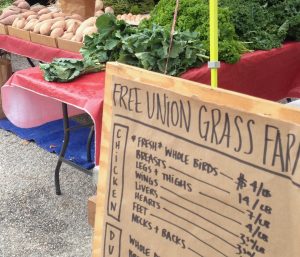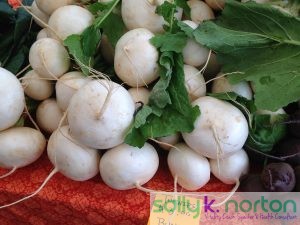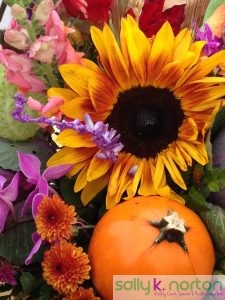Oxalate Awareness is missing from the menu of options for healthy living. That is because other people have decided what matters and what doesn’t. What if they based their decisions on wrong and very incomplete information? Can you find peace and confidence despite the experts’ ignorance?
Painful Searching for Missing Answers
My clients and followers care about their health. They’ve read, they’ve done research, they’ve made admirable efforts to do the right thing when it comes to their food, their fitness, and so on. Despite all this intention, attention, willingness and effort, they still don’t feel good. Something is bothering their organs and cells. In one form or another, irritating problems don’t seem to get better no matter what they do. Worse still is that the continuing slide in their well-being can be downright scary or demoralizing.
Increasing desperation keeps them hunting for options and answers. They suffer, they try, they seek, they apply the given remedies, they still suffer. They seek, they try—again and again. People around them question their sanity. Friends start to wonder if these people are malingering, or fanatical, or just plain weak in the face of normal aches, pains, and fatigue. Some loved ones watch them suffer in utter helplessness and confusion.
But like me, my tenacious seekers know they are not meant to suffer so. This conviction keeps them searching for real relief, for that obscured path to a more livable existence. By grace, thousands of us have found the oh-so-elusive solution. We’ve learned how to avoid oxalate. We have started down the long path of supporting our bodies’ efforts to lower our oxalate burden and rebuild our health.
In the wake of some simple diet changes, miracles commence. We’re dumbfounded. So many of the foods we now know to avoid are still being heralded as good for you, and not acknowledged as what we know them to be: the source of pain, bad sleep, bad skin, fatigue, digestive problems, and urinary tract and kidney problems.
Missing Option
Why was this healthy eating option missing for us despite all our reading and research? Why is oxalate awareness absent from the marketplace of ideas and from the curiosity of researchers? Why are doctors, nutritionists, and health coaches ignoring this very real problem? “Why” may be a futile question to attempt to answer. There are many forces that keep the oxalate problem hidden. Exploring them all could fill a book (and might someday).
The fact is that these “experts” (for example: text book authors, university professors, and clinicians) are comfortable with their own ignorance of the science on this subject and happy to discount the experience of those who suffer from very real (and serious) oxalate-induced health problems. They are sure of themselves based on their own social position and cultural forces that valorize their attitudes. Their opinions glitter with a disingenuous veneer of rationality. Shrouded by social prestige, their dismissals of real-world observations and lived experience hold sway. They expect us all to agree with what they believe, because, well, they are the experts. Too often we cooperate.
They are willing to “think” for us and decree what is possible without checking their facts, and with a tenacious resistance to considering phenomena that suggest that some of what they think they know might be wrong. Experts who know nothing about oxalate (and its effects on the body) are the norm, not the exception. That means we’re on our own.
On a Leading Edge
We oxalate sufferers have to become leaders in our own healing journey. Out here on the oxalate-aware path we’re on a new frontier. We are pioneers, willing or not. That is disturbing for many of us because it is a life and death matter. We expect to get some validation or some form of help and understanding from health professionals. All that is in short supply. And that is the reason I became an oxalate researcher and educator.
What we have discovered out here on the frontier is that a toxic substance, when consumed on a regular basis, has toxic effects on the body. Insidious, long-lasting toxic effects. Accumulation of the toxin and the resulting cumulative damage causes a huge variety of real and debilitating problems. Why would anyone deny this reality? Why do experts show no interest in the thousands of people who have benefited by lowering their oxalate intake?
Alas, the experts in white coats, the authors, the sellers of nutbars and smoothies, and the plant-based diet demagogues don’t care if you are right. They will deny your reality, despite its logic and simplicity (and scientific backing), because they have concluded that what you are experiencing simply can’t be true.
An Inconvenient Truth
Oxalate (the toxin) is made by plants and occurs in familiar, profitable, and tasty foods. These “advantages” are enough to cancel simple logic and close down the discussion, end exploration, and stifle understanding. The implications (for our diets and our culture) are too painful to face.
Another issue is that oxalate is tricky to study. Although pathologists have repeatedly called out oxalate as trouble, it manages to evade condemnation by researchers and academics. The science is incomplete; our understanding of biology is extremely limited. Current science still tends to treat the biological systems that manage whole-body health too much like a simple machine, rather than a complex actor making use of many interacting systems to maintain its well-being. Our simplistic thinking has made it convenient to dismiss concerns about oxalate before we ever developed the tools to identify its subtle and sneaky effects so we can catch it in the act of ruining our health.
Know What you Know
If you are benefiting from avoiding oxalate, let what is true be true. Celebrate that! Your ultimate success depends on you staying the course. Be glad that you found the missing answer and that your path to health is finally clear.
Please know in your heart that what you have discovered about oxalates’ effects on your health is real and really serious. The most precious thing you can possess is your health and a peaceful heart. You can have both, even in a world that does not yet “get it” when it comes to oxalate.
Remember
You deserve to be informed, even when your doctor is not. Although it has its appeal, you don’t need your doctor to think for you or to validate your experience.
May you move forward in 2019 with hope and transformative healing. May you share the good news with others! May you ring in the New Year with confidence and a peace-filled heart!







